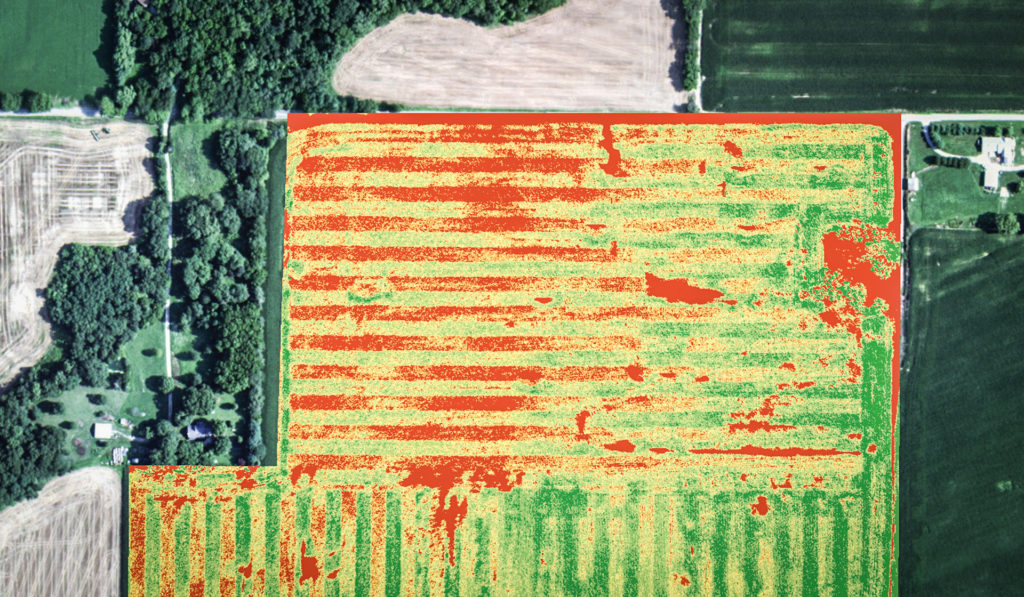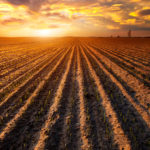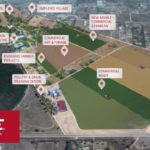Futuristic Farming
With eyes in the sky and boots on the ground, farmers have more data than ever with which to make decisions.

Futuristic Farming
With eyes in the sky and boots on the ground, farmers have more data than ever with which to make decisions.While unmanned aerial vehicles (UAVs, or drones), satellites and airplanes have the power to get up high, it’s the cutting-edge NDVI and other images they capture that really assist people-powered decisions on the ground and offer increasingly precise data throughout the crop cycle. From plant population, weeds and soil compaction to nitrogen deficiencies, over-irrigation and pests, the powerful snapshots not only help pinpoint where those issues lie in a field, but why, and what solutions are possible.
Each plant in a field is, in essence, its own sensor. Its unique surface and texture provide a sort of data signature in the form of reflected light. Multispectral imagery captures those reflections and, in turn, can provide insight to the health of the plant.
So, when you view a normalized difference vegetation index (NDVI) or a normalized difference red edge index (NDRE), it’s simply a calculation of visible and near-infrared light reflected by that vegetation. Or, says Darren Goebel, agronomist and AGCO’s director of global commercial crop care, “it’s the intensity of photosynthesis occurring in the plants.”
Red areas in NDVI images could indicate a dead crop, bare soils or even a building. Conversely, adds Goebel, “green areas in an image may indicate a very healthy growing crop, and the darker the green, the healthier the crop.”
Improving Imagery Through Research
“Two years ago, the whole industry was concerned about the UAVs and what they could and couldn’t do”—from limited battery life and FAA regulations, says Terry Griffin, assistant professor, department of ag economics at Kansas State University and faculty adviser to the Kansas Ag Research and Technology Association (KARTA), a group of producers who share their technology and on-farm experimentation. “Everyone was ignoring what UAVs actually did—take images—and they were more concerned about the hardware.”
But, he adds, that interest in the hardware has actually driven the research toward better imagery. These days you’d be hard-pressed to find a university or equipment company not involved with some type of imagery or UAV research.
“Scientists are still working to determine which wavelengths can tell specific weeds apart,” says Dennis Bowman, a crop systems educator at the University of Illinois Extension. “You can definitely see a difference in the reflectance of waterhemp versus soybeans, but at a practical, commercial level, we still can’t tell waterhemp from velvetleaf.”
The whole goal of advanced imagery—of these futuristic drones hovering over a field of beans or corn—is to gather data and context, provide benchmarks potentially allowing farmers to help reduce costs, and maximize efficiencies and returns. Still, producers need to interpret that data correctly and make smarter decisions based on it. Because, points out Jason Ward, AGCO Global Fuse precision farming training manager, “in precision ag, we’ve been really good at generating large volumes of data, but not great about making it completely actionable … yet.”
For the full, in-depth article, read the rest of Futuristic Farming online.
Written by: Claire Vath



